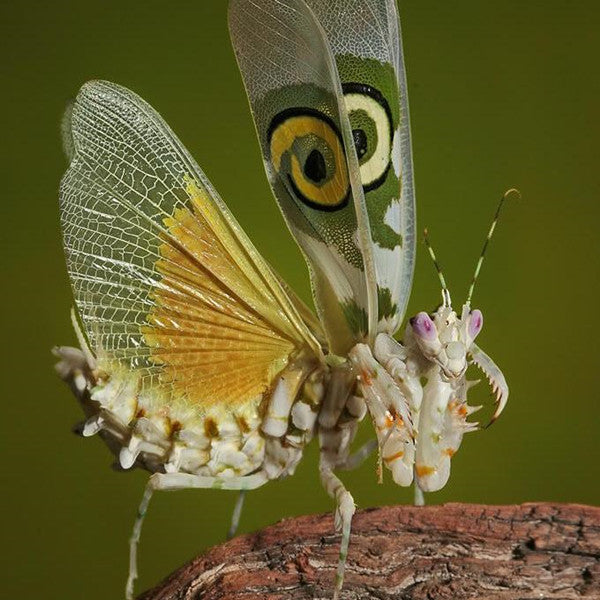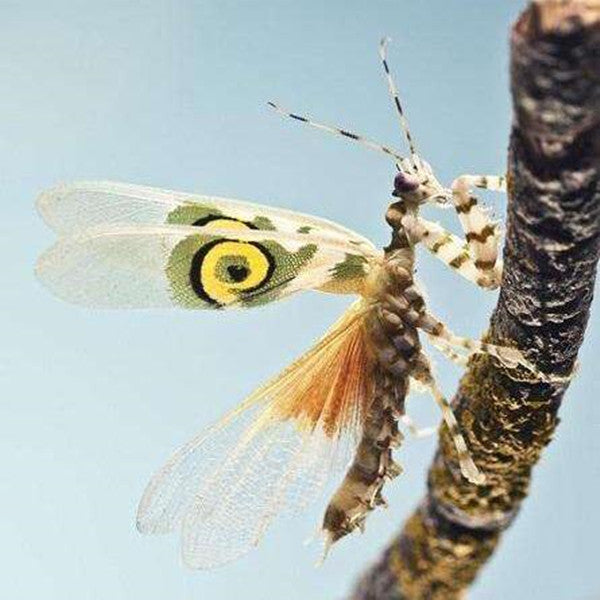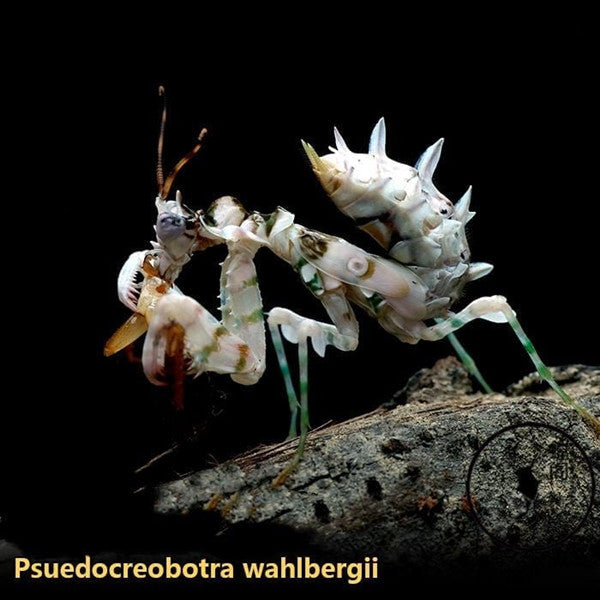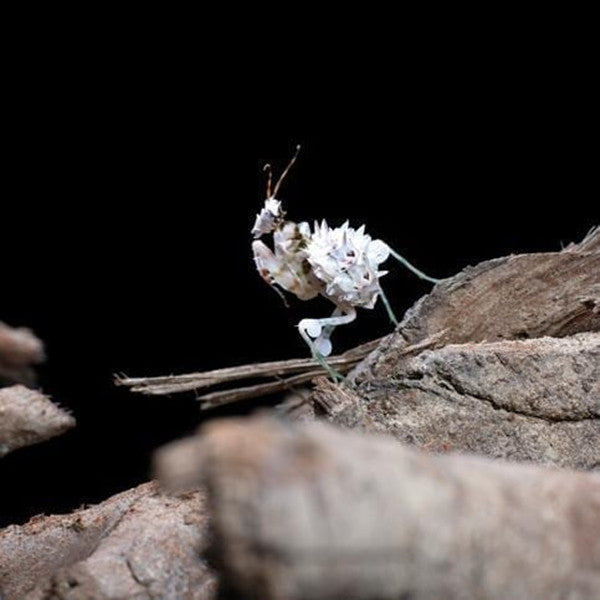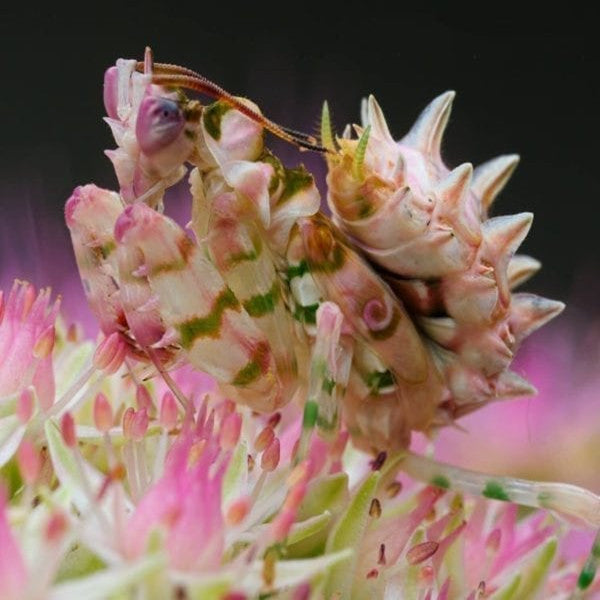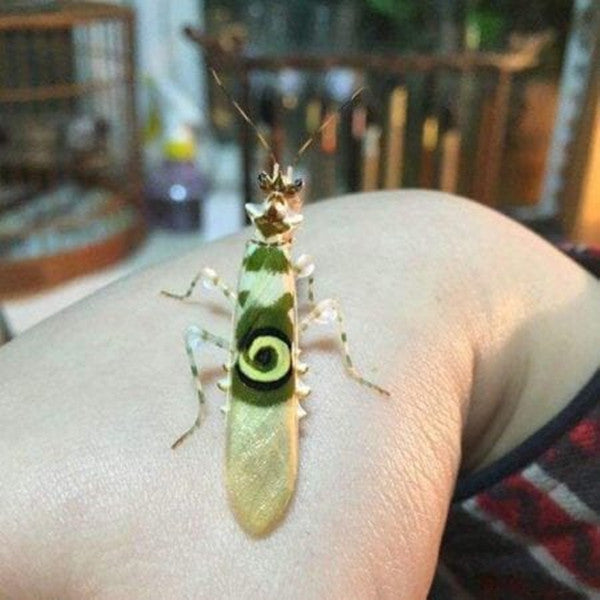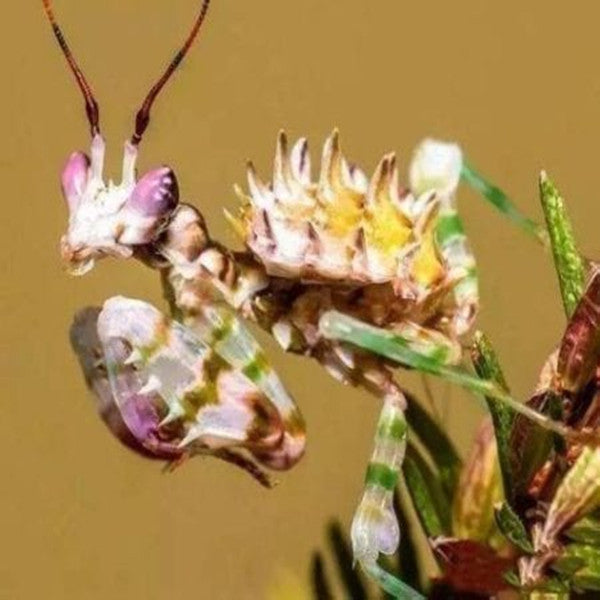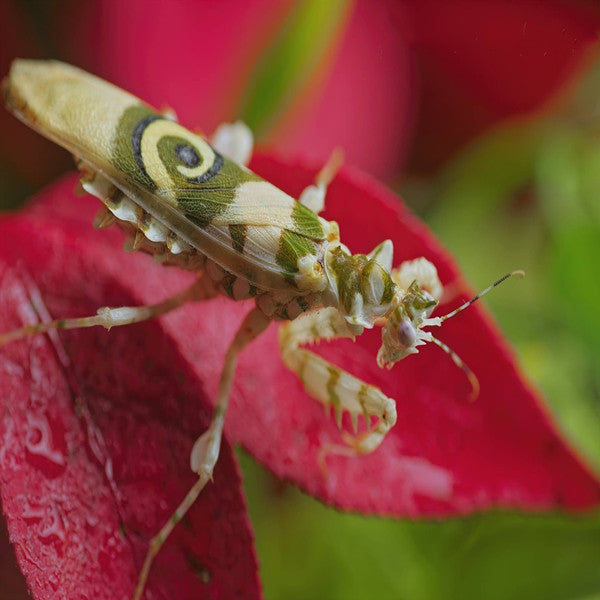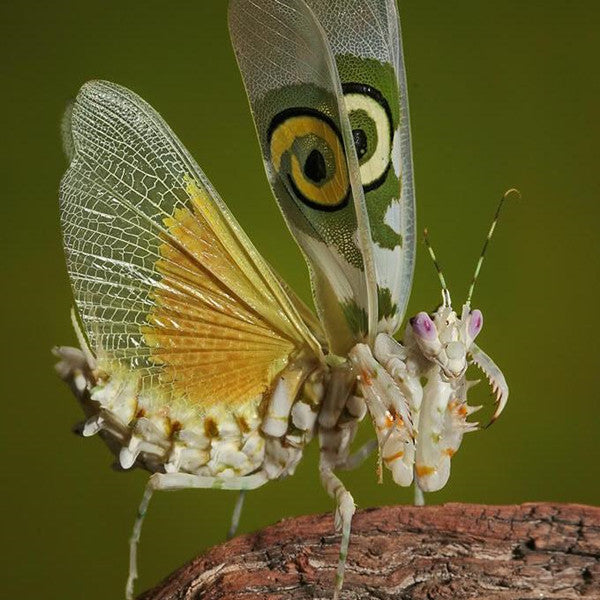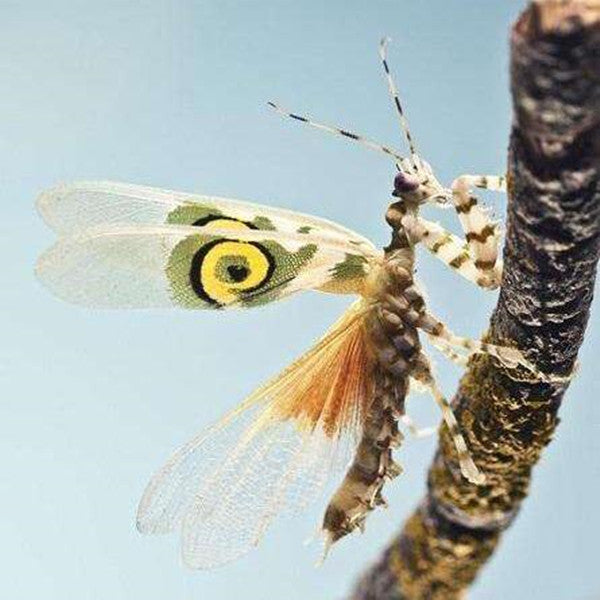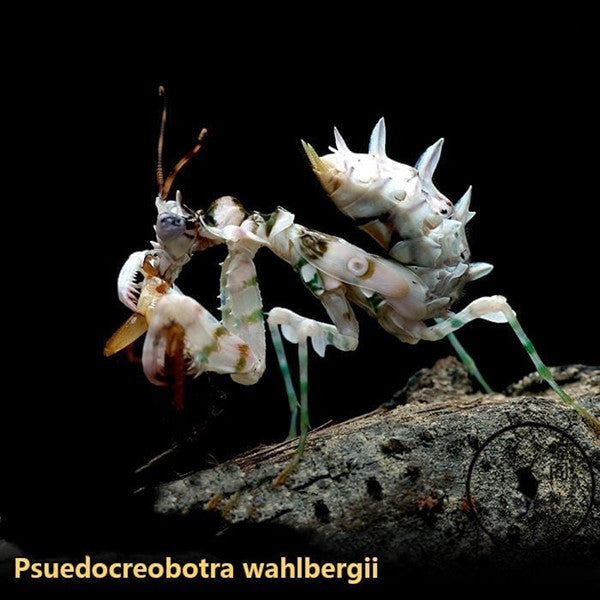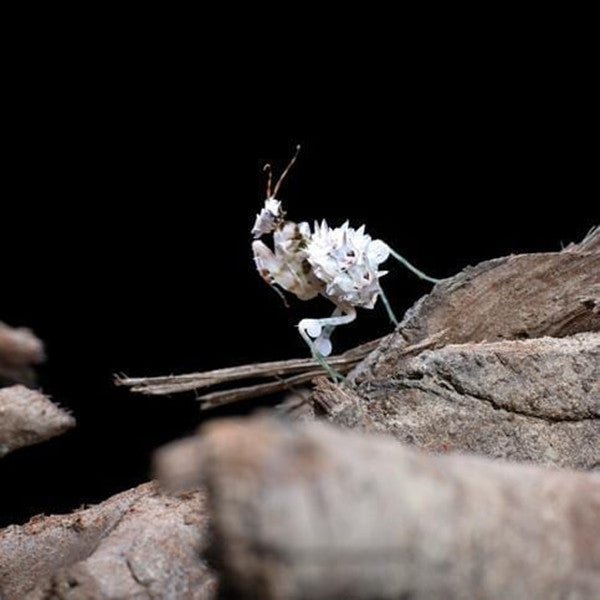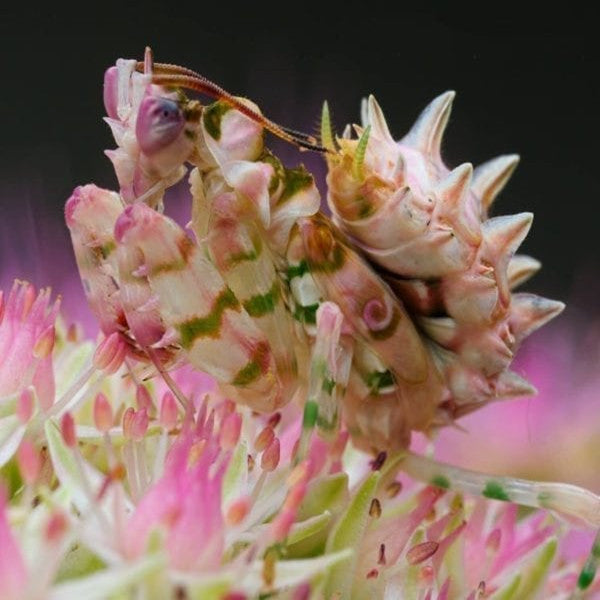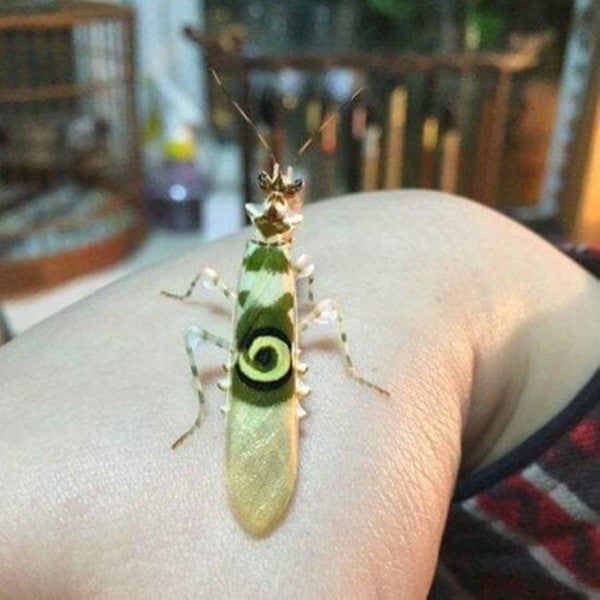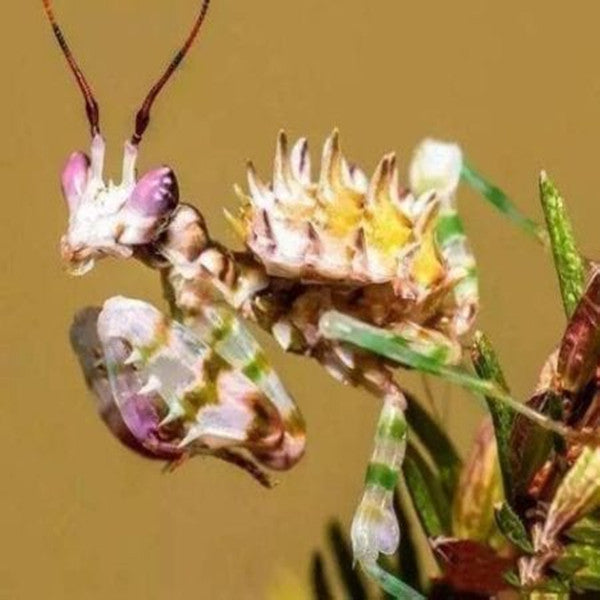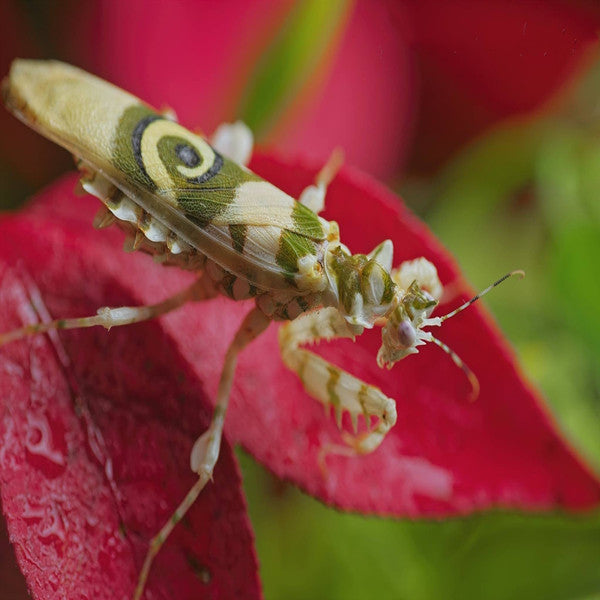1
/
of
8
My Home Nature
Spiny Flower Mantis (Pseudocreobotra wahlbergii)
Spiny Flower Mantis (Pseudocreobotra wahlbergii)
Regular price
$105.90 USD
Regular price
Sale price
$105.90 USD
Unit price
/
per
Couldn't load pickup availability
Description:
- Pseudocreobotra wahlbergi, or spiny flower mantis, is a small Flower Mantis native to southern and eastern Africa.
- The adult has spiny structures on the underside of its abdomen, giving it its name. It is variable in colour, being typically greenish, but it can equally be yellowish, pinkish or reddish. It has a striking spiral "9" mark on its forewings providing a conspicuous eyespot in black, green and cream surrounded by a green patch. The hind wings are orange on the inner part and transparent on the outer part. The species is common in captivity and is easy to rear. The female lays egg cases almost three times its size.
- The African Flower Mantis is colored usually white-green. Occasionally goes the white but pink or yellow over, depending on how it is kept moist and what surface it sits. Thus it is able in nature, to match the color of the flowers
-
This Mantis will "Threat display" wings with large eyespots to deter attackers, or if frightened. its of course harmless and so interesting to witness
Behaviour and ecology:
- P. wahlbergi has a deimatic display in which it spreads its forewings, making itself appear larger and prominently displaying its eyespots to startle would-be predators. While at rest it is well camouflaged, and is a sufficiently good aggressive mimic of a flower that prey insects can attempt to pollinate it, at which moment the mantis seizes and eats them. The mantis is able to kill prey several times larger than itself
General
- Distribution: Eastern South Africa
| Adult size: | males approximately 4 cm, females about 5 cm attitude |
| Temperature: | 77 - 86℉(25 - 30℃) |
| Humidity: | Tags 50 – 60%, at night to 70 – 80% |
| Feeding: | L1 / L2: Small fruit fly Drosophila melanogaster; L3: Large fruit fly Drosophila hydei; L4: Large fruit fly Drosophila hydei; L5 - L7 to adult: Bluebottle flies |
Share
